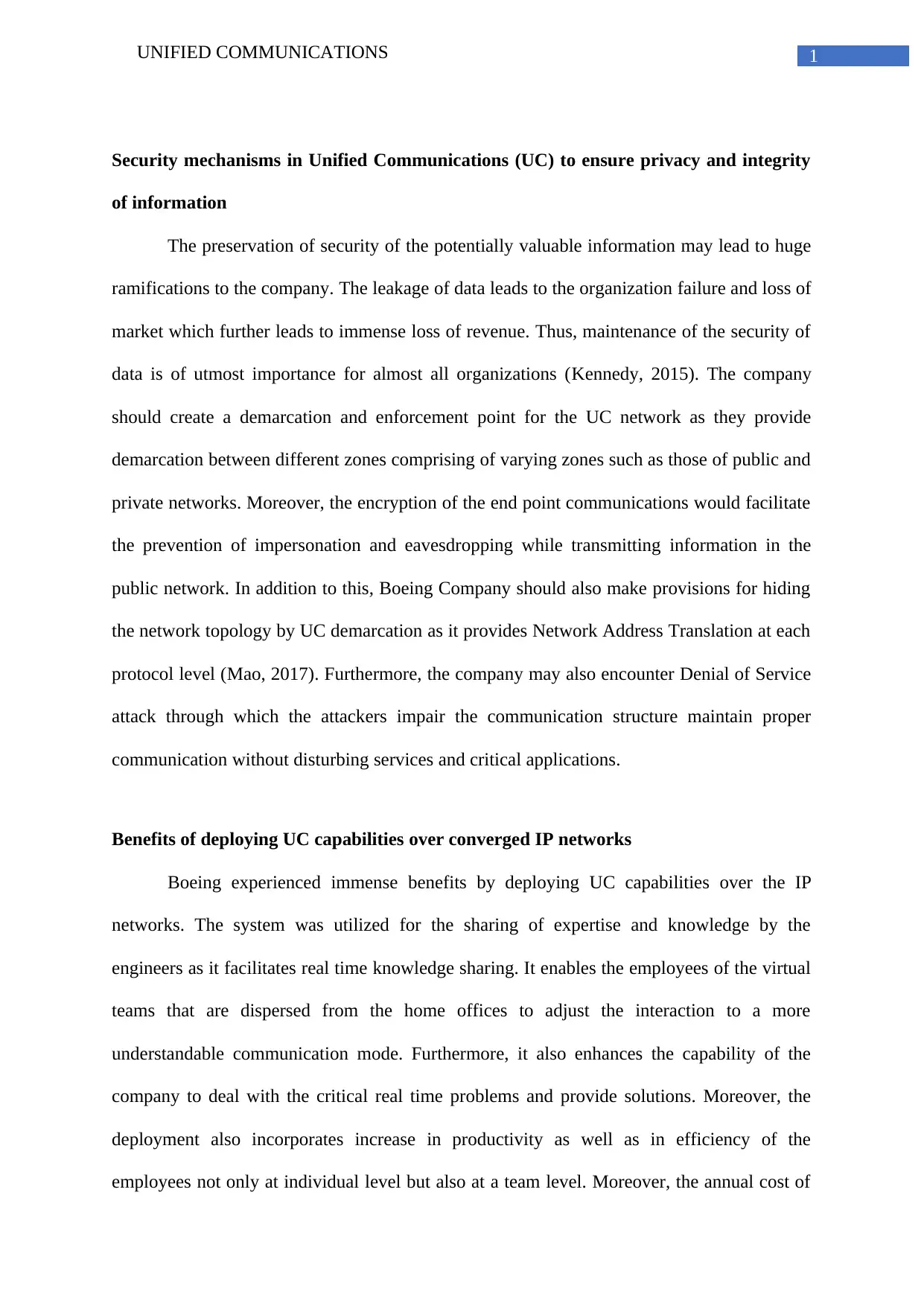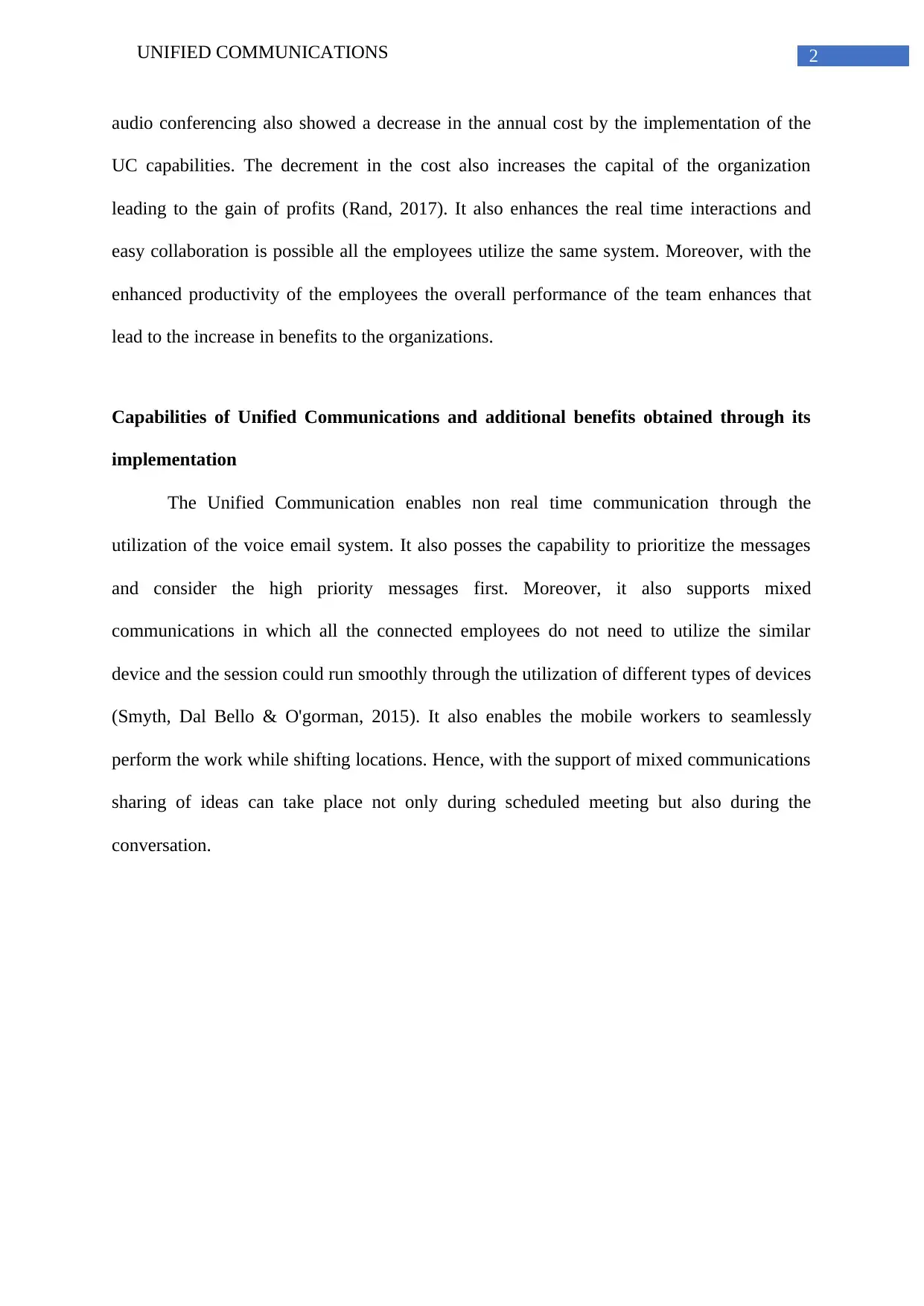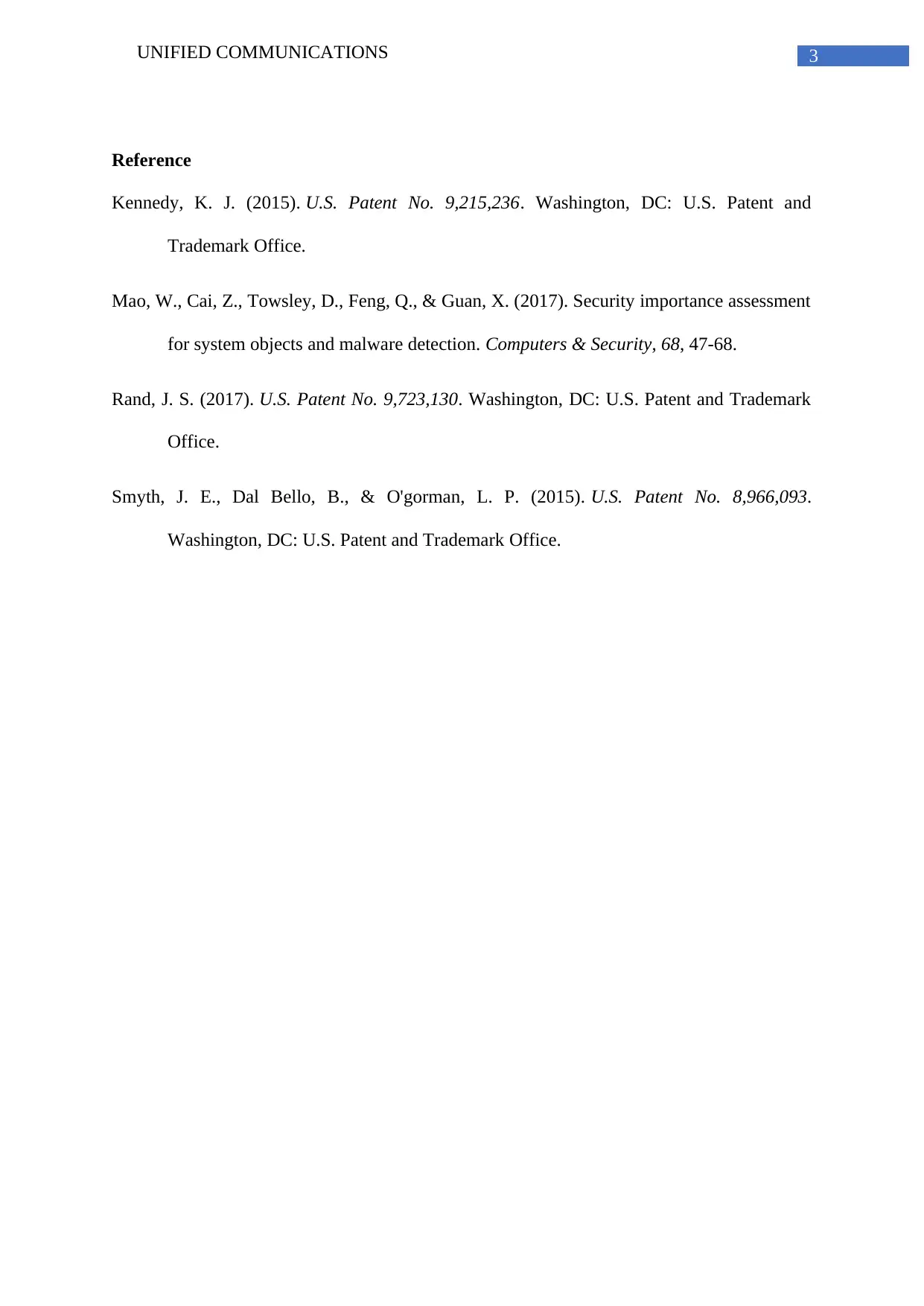Analyzing Unified Communications and Security at Boeing: Case Study
VerifiedAdded on 2023/06/13
|4
|702
|289
Case Study
AI Summary
This case study examines the implementation of Unified Communications (UC) at The Boeing Company, a global manufacturer of aircraft and jetliners with a large, geographically dispersed workforce. The study highlights the security mechanisms necessary to ensure data privacy and integrity within UC systems, emphasizing the importance of demarcation points, encryption, and protection against Denial of Service attacks. It details the benefits Boeing experienced from deploying UC over converged IP networks, including enhanced real-time knowledge sharing, improved team collaboration, increased employee productivity, and reduced audio conferencing costs. Furthermore, the study explores the capabilities of UC, such as non-real-time communication, message prioritization, mixed communications support, and seamless mobile work integration, underscoring the additional advantages gained through its implementation. Desklib offers this case study and other resources to aid students in their academic pursuits.
1 out of 4











![[object Object]](/_next/static/media/star-bottom.7253800d.svg)